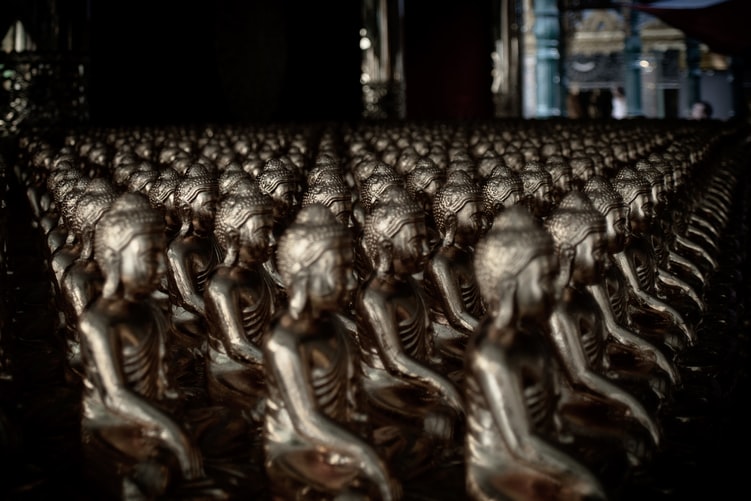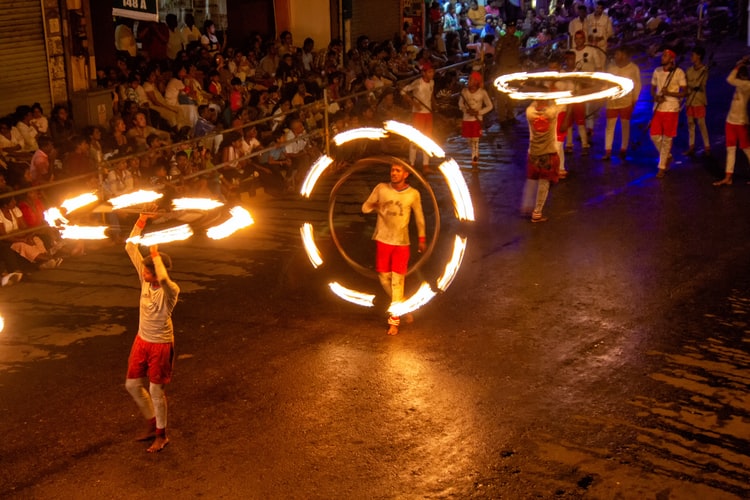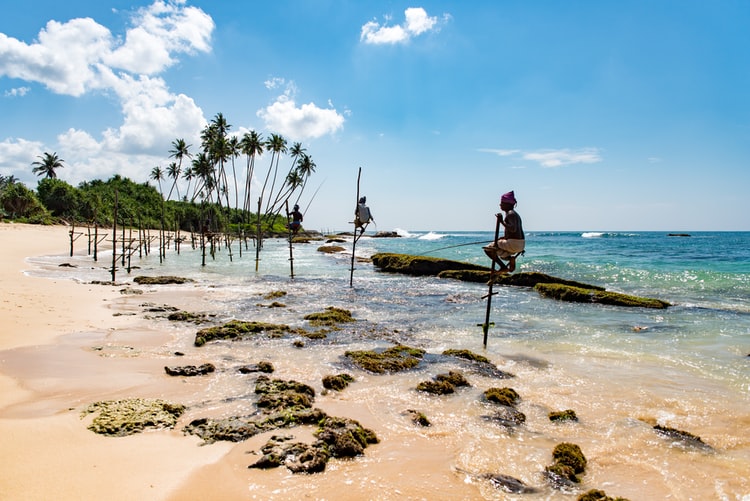Sri Lanka, the beautiful island country that lies south of India, has an extraordinary amount of incredible places to visit in spite of its small size. Although completely surrounded by the Indian Ocean, the coastline is lined with idyllic and often refreshingly undeveloped beaches whereas the mainland boasts a compelling variety of beautiful landscapes ranging from wildlife-rich lowland jungles to the misty highlands of the hills, surrounded by tea plantations all over. This Sri Lanka travel guide for 2021will tell you about the plenty of man-made attractions in Sri Lanka for you to explore when you visit it. Sri Lanka has more than two thousand years of recorded history and many remarkable achievements of the early Sinhalese civilization can still be seen in the great religious monuments and the ruined cities that litter the Northern Plains of this beautiful country. The glories of this early Buddhist civilization continue to provide a symbol of national pride for the Sri Lankan people, while Sri Lanka’s historic role as the world’s oldest stronghold of Theravada Buddhism lends it a unique cultural identity. But there’s more to Sri Lanka than just Buddhists. Its geographical position at one of the most important staging posts of the Indian Ocean trade laid it open to a uniquely wide range of influences that would transform its culture. Generations of Arab, Malay, Portuguese, Dutch, and British settlers subtly transformed its culture, architecture, and cuisine slowly over the course of time. Meanwhile, the long-established Tamil population in the North has established a vibrant Hindu culture that owes more to India than to the Sinhalese south in the country’s population. The tropical island has become more of a hot-spot to keen travelers in recent years, who want to explore the budding new tourist zones and popular cities in this country although tourism in Sri Lanka remains relatively low-key. The country’s wonderful individuality which is quite evident in its contrasting landscapes and its distinct culture is helping to shape Sri Lanka as a top destination in Asia.
Where to go in Sri Lanka –
If you want to watch whales from palm-fringed beaches, track leopards through lush green rain forests or go trekking and hiking in the hills through the tea plantations, Sri Lanka has it all. You can get an insight into the island’s unique and diverse culture by exploring Buddhist monuments, clambering over colonial forts, and indulging in its intensely flavored and delicious cuisine. With such a wealth of attractions, figuring out where to go in Sri Lanka can be quite a tedious task, although its relatively small size means you can fit a lot of adventure into a single trip. Our Sri Lanka travel guide for 2021 shall guide you about which destinations are the most favorable for a holiday with your loved ones as the length and breadth of Sri Lanka have been covered in this article, and the best places have been carefully chosen.
West Coast of Sri Lanka –

All visits to Sri Lanka currently begin at the International airport just outside the capital city of Colombo and by far the island’s largest city. It’s a sprawling metropolis whose contrasting districts offer an absorbing introduction to Sri Lanka’s myriad cultures and multi-layered history, cultures, and unique traditions. Many visitors head straight for one of the west coast’s beaches from the airport, whose innumerable resort hotels still power the country’s tourist industry. Destinations include the package holiday resorts of Negombo and Beruwala, the more stylish resort Bentota, and the old hippy hangout destination of Hikkaduwa. The more unspoiled countryside can be found north of Colombo at the Kalpitiya peninsula and in the vast Wilpattu National Park nearby, home to leopards, elephants, sloth bears, and other wild animals.
South Coast of Sri Lanka –
Beyond the destination of Hikkaduwa, the south coast is significantly less developed. Gateway to the region is the marvelous old Dutch city of Galle, Sri Lanka’s finest colonial town that still has the colonial vibe to it. Beyond lies a string of fine lines of beaches. These include the ever-expanding village of Unawatuna and the quieter stretches of coast at Weligama, Mirissa, and Tangalla, as well as the lively provincial capital of Matara, boasting further Dutch remains from the Dutch times in Sri Lankan history. East of here, Tissamaharama serves as a convenient base for the outstanding Yala and Bundala national parks where you will find abundant wildlife and lush green forests, and for the fascinating temple town of Kataragama.
The Hill Country –
Inland from the capital city of Colombo rise the verdant highlands of the hill country, enveloped in the tea plantations which were first introduced by the British and which still play a vital role in the island’s economy. The symbolic heart of the region is Kandy, Sri Lanka’s second city and the cultural capital of the Sinhalese people. Its colorful traditions are embodied by the famous Temple of the Tooth and the magnificent festival of Esala Perahera, Sri Lanka’s most colorful festival. South of here, close to the highest point of the island, lies the old British town of Nuwara Eliya, the center of the country’s tea industry and a convenient base for visits to the spectacular Horton Plains National Park, which is another beautiful national park for adventure or animal sighting. A string of towns and villages called Ella, Haputale, and Bandarawela which along the southern edge of the hill country offer an appealing mixture of magnificent views, wonderful walks, and old-world British colonial charm. Close to the hill country’s southwestern edge, the soaring summit of Adam’s Peak is another of the island’s major holy pilgrimage sites. The gem mining center of Ratnapura to the south serves as the best starting point for visits to the elephant rich Uda Walawe National Park where you will spot plenty of elephants wandering about and the rare tropical rainforest of Sinharaja.
The Cultural Triangle –

Towards the North of Kandy, the hill country tumbles down into the arid plains of the northern dry zone region. This area, known as the Cultural Triangle, was the location of Sri Lanka’s first great civilization, and its extraordinary scatter of ruined palaces, temples, and dagobas still give a compelling sense of this glorious past, amazing essence, and vibe. Foremost amongst these are the fascinating ruined cities of Anuradhapura and Polonnaruwa, the marvelous cave temples of Dambulla, the beautiful hilltop shrines and dagobas of Mihintale, and the extraordinary rock citadel of Sigiriya. One of Sri Lanka’s most popular and interesting nature reserves, Minneriya National Park, also lies within the region and on the migration route for the hundreds of elephants that migrate between various parks each year.
The East and the North –
The Gateway to the east is characterful of the war-torn, city of Trincomalee. The east’s huge swathe of the pristine coastline itself remains almost completely undeveloped, save for the sleepy villages of Nilaveli and Uppuveli, just north of Trinco, and the surfing center of Arugam Bay, at the eastern coast’s southern end. But the construction of a huge new resort at Passekudah is likely to change this fact. If you’re looking where to visit in Sri Lanka that’s even less visited, the north is slowly emerging after many years of civil war. Increasing numbers of visitors are making the long journey to the beautiful city of Jaffna, while a side-trip to remote Mannar, closer to India than Colombo, is another adventurous possibility for most tourists who are looking for some thrill.
Best time to travel to Sri Lanka –
The climate is affected by two separate monsoons in the country of Sri Lanka, meaning you can usually dodge the rain when you travel to Sri Lanka, as it will probably be dry somewhere on the island. The east is a mirror image of the west: when the southwest or ‘Yala’ monsoon hits the west and southwest, from April or May to September, the sun is shining in the east and northeast and vice versa at the same time. However, the northeast or ‘Maha’ monsoon is generally lighter. In October and November, just before the ‘Maha’ monsoon, there is unsettled weather across the island all throughout. This means you might get caught in a downpour or thunderstorm wherever you are on the island. Bear in mind that there are variations in the general weather pattern, which means no two years are likely to be quite the same so it is quite unpredictable also. But it’s a pretty safe bet that temperatures will be more or less constant most of the time. You can rely on an average temperature of 26 degrees to 30 degrees celsius or higher on the coast and the lowlands, dropping the higher up you go. So if you’re heading to Kandy, you can expect temperatures of 18 degrees to 22 degrees celsius, but only 14 degrees to 16 degrees celsius in the hill country, such as Nuwara Eliya. And temperatures in the hills can drop to almost freezing cold at night, so you need to make sure that you pack your extra layers. Broadly speaking, in terms of the weather, the best time to visit the west and southwest of Sri Lanka, including the hill country, is the time period between December to March. If your itinerary is geared more towards the eastern side of the island, you’ll get the best conditions from the time period between April or May to September.
Festivals in Sri Lanka –
When you visit Sri Lanka chances are there will be a festival in full swing or preparations for one will be underway during your stay in Sri Lanka. With four major religions coexisting on the island, each with its own calendar of festivals, as well as many public holidays, these events can be extremely hard to avoid and you should not avoid them as well, otherwise, you would be missing something really amazing. You might be planning your itinerary to avoid the biggies that seem to bring the island to a standstill, or you might want to be in the thick of it if you really want to experience the real essence of Sri Lanka. Here are just three of the big festivals that take place each year, which are also public holidays, and our Sri Lanka travel guide for 2021 recommends visiting one of them at least during your stay in Sri Lanka. Sinhalese and Tamil New Year is a family festival, and which marks the Lunar New Year, usually beginning in April. Most businesses are closed as the island enjoys festivities, games, and traditional foods. Vesak Poya is an important Buddhist festival in May celebrating the birth, enlightenment, and death of Gautam Buddha. All the houses and homes hang colorful lanterns outside, and pandals, which are panels depicting scenes from the life of Buddha, are displayed all over the island country of Sri Lanka. Kandy Esala Poya Perahera is Sri Lanka’s most extravagant festival, celebrating the Buddha’s first sermon and the arrival of the Tooth Relic in Sri Lanka, lasting ten days. Kandy comes alive with colorful spectacular processions of elephants, drummers and dancers, and acrobats, and this spectacle of a festival should be on the itinerary of every tourist traveling to Sri Lanka. Dates vary according to the Lunar calendar, but usually, the festival takes place in late July or August every year.
Getting Around in Sri Lanka –
Getting around by bus – As a rule of thumb, the buses in Sri Lanka are generally faster than trains for traveling around the island nation and its cities, and a cheap way to get around. It’s the main means of transport, getting into those hard to reach corners of the island, although it can be a bit of a rough ride, with drivers careering around corners and the older buses giving a bit of a bone-shaking experience at riveting driving speeds.
Getting Around by Train – Going by train is more relaxed and can be a great way to take in the landscape, especially on the marvelous intercity services on the hill country route from Colombo to Kandy and Badulla. These have a special carriage, or observation car, with large panoramic windows offering 360-degree views of the incredible landscapes of this beautiful island nation. Improvements have been made on the rail network across the island and intercity lines have more comfortable air-conditioned carriages. But getting around the hill country is still painfully slow and time-consuming.
Getting around by domestic plane – Domestic air services provide a superfast alternative to long journeys by road or rail and are memorable in their own right, with frequently beautiful views of the island from the sky above.
Getting around by auto-rickshaws – Rickshaws are a convenient and fun way to travel short distances in Sri Lanka, although journeys can be rather hair raising, as the rickshaw drivers feel they are roadside Michael Schumacher’s and the way they dodge in and out of fast-moving traffic is hair bending. Make sure you set a fare with the driver before you set off otherwise don’t be surprised if the fare turns out to be remarkably high at the end of the trip.










